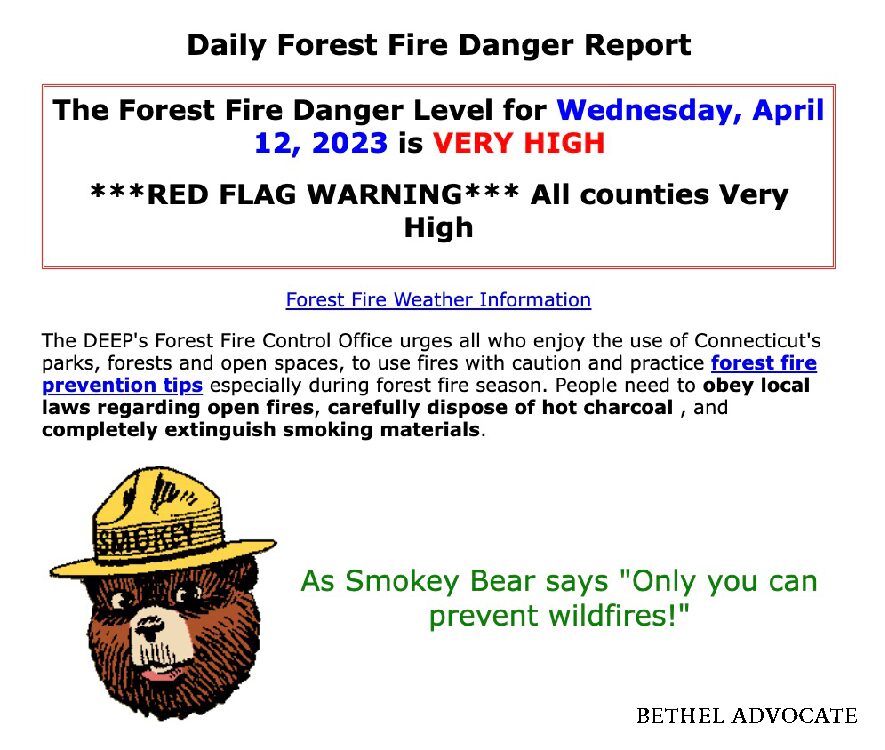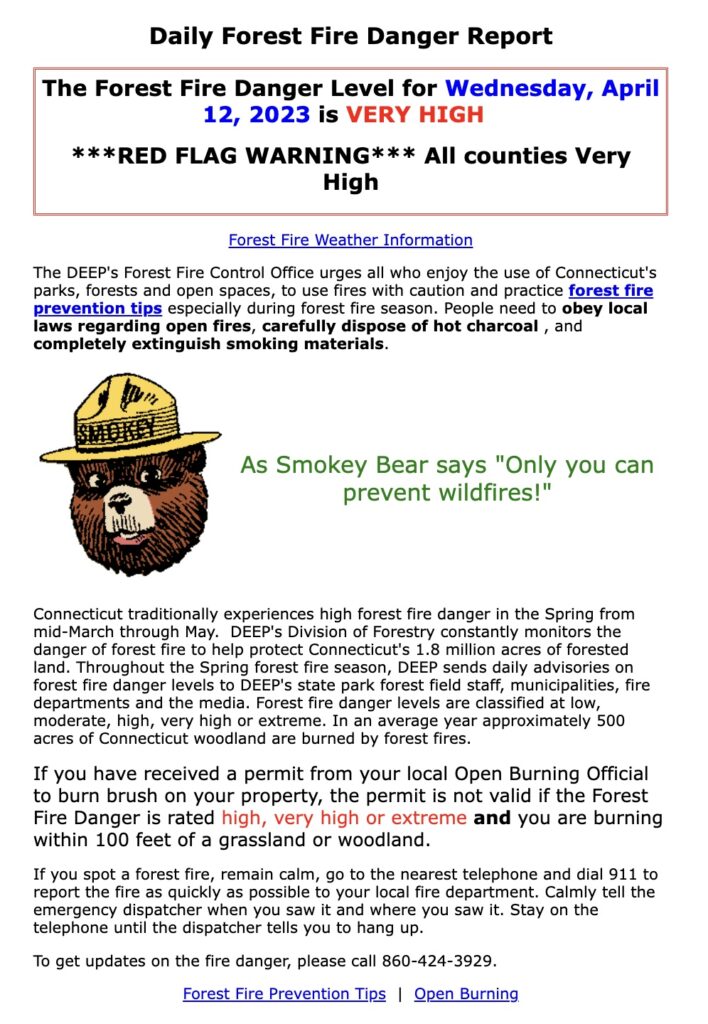
Report by Paula Antolini, April 12, 2023, 5:06PM EDT
VERY HIGH FIRE DANGER WARNING CONTINUES TODAY, APRIL 12, 2023.
News release / The Connecticut Department of Energy and Environmental Protection (DEEP):
(HARTFORD)–04/08/2023–The Connecticut Department of Energy and Environmental Protection (DEEP) is reminding residents that the fire danger level for today is very high, and a red flag warning has been issued by the National Weather Service.
A very high forest fire danger level means conditions are such (wind, relative humidity, precipitation) that chances of spread are very high. Forest fire danger levels are issued for the state by DEEP’s Division of Forestry. Red flag warnings are issued by the National Weather Service. A Red Flag Warning means that critical fire weather conditions are either occurring now, or will shortly. Any fires that start may spread rapidly and become difficult to extinguish.
With very high forest fire danger today, DEEP encourages residents to be aware of how to prevent forest fires, and to familiarize yourself with the tips available here: Forest Fire Prevention Tips (ct.gov)
DEEP reminds all state residents that if they have a permit from their local Open Burning Official allowing them to burn brush on their property, the permit is not valid if the Forest Fire Danger is rated High, Very High, or Extreme and you are burning within 100 feet of a grassland or woodland.
Information About Spring Fire Season: Normally Mid-March to Mid-May
After the snow melts in the northeastern part of the U.S., we enter into a traditional spring fire season. This is the time of year when deciduous trees are bare and the warm spring sun heats up the forest fuels. Forest fuels are made up of anything that burns; typically grasses, leaves, twigs, branches, and decaying material in the soil. As the days grow longer and the sun gets hotter, the fuels that are most exposed dry out very fast. Grasses, twigs, and very small branches are called “1-hour fuels”. That is, they can take on atmospheric conditions within an hour. Consequently, we can receive precipitation and, if the sun comes out and a breeze picks up, the fine fuels can be available for burning within an hour. Larger fuels take longer to dry out. Typically, fires that start this time of year burn just the surface leaves and can spread very fast. Generally, they cause little, long-term damage to the forest.
During the spring, the Spread Index usually drives the fire danger. Wind is most critical.
*****
If you spot a forest fire: remain calm, go to the nearest telephone and dial 911 to report the fire as quickly as possible to your local fire department. Calmly tell the emergency dispatcher when you saw it and where you saw it. If you see anything suspicious at or near the scene of the fire, take note and relay that to 911 as well. Stay on the telephone until the dispatcher tells you to hang up.

###
